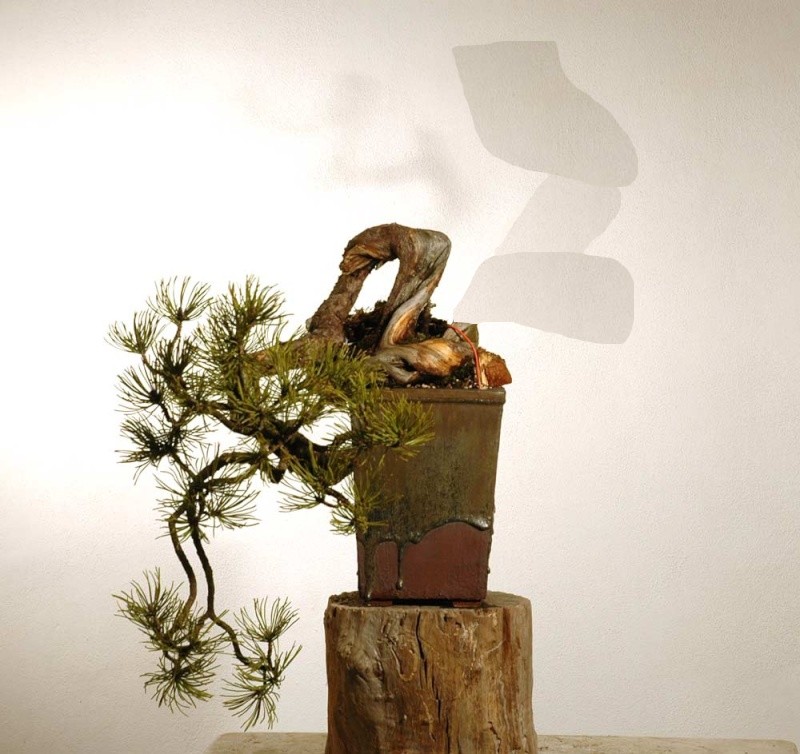mugo pine -preliminaries-
+5
Tona
Todd Ellis
rogueshoots
abcd
MerschelMarco
9 posters
Page 1 of 1
 mugo pine -preliminaries-
mugo pine -preliminaries-
This mugo was found 2006. Two years later it was traded and I lost sight of it. Now the tree was up for sale again, and I could not resist to buy it back. Meanwhile the pine was repotted about three years ago, it is healthy, time to give thoughts to the planting positions.
Photo 1:
The tree in its original position, how it grew in nature, interessing but much to horizonal.

Photo 2:
In the topview. Very dynamik and elegant trunk line. This is it, but of course it is not sure whether it is possible.

Photo 3-5:
to get a better imagination I made several virtuals. I hope one of these planting positions is managable.

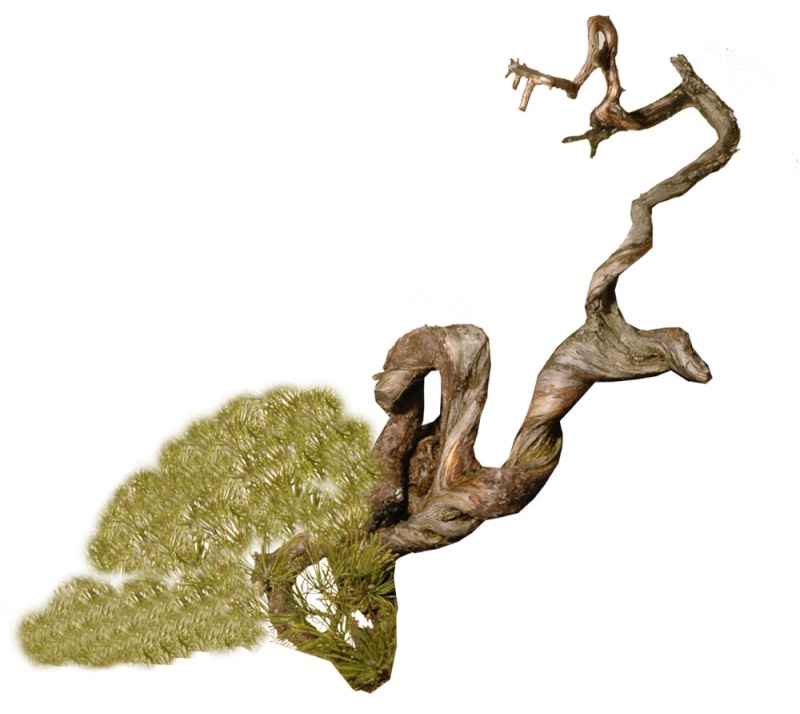

Photo 6:
Now this is the result. I`am very happy with it especially this result was a little bit unexpected because of the roots.

Now it time to wait..
Regards,
Marco
Photo 1:
The tree in its original position, how it grew in nature, interessing but much to horizonal.

Photo 2:
In the topview. Very dynamik and elegant trunk line. This is it, but of course it is not sure whether it is possible.

Photo 3-5:
to get a better imagination I made several virtuals. I hope one of these planting positions is managable.



Photo 6:
Now this is the result. I`am very happy with it especially this result was a little bit unexpected because of the roots.

Now it time to wait..
Regards,
Marco
MerschelMarco- Member
 Re: mugo pine -preliminaries-
Re: mugo pine -preliminaries-
thats a nice mugo a lot better that the one i just got. one question when you you repot mugo in germany
Guest- Guest
 Re: mugo pine -preliminaries-
Re: mugo pine -preliminaries-
andre_f wrote:thats a nice mugo a lot better that the one i just got. one question when you you repot mugo in germany
Andre,
I repot my mugo pines in spring, when the buds beginn to stretch (beginning April - end of April) or late Summer (end of August- beginning of September).
It is quite strange that the owner of the tree and several other people who saw it were not able to make use of this pine. In my opinion this is one of the best mugo pines I have found yet whereas it was quite cheap.
Regards,
Marco
MerschelMarco- Member
 Re: mugo pine -preliminaries-
Re: mugo pine -preliminaries-
rogueshoots wrote:abcd, are you Kidding? That's the best bit!
hmmm, I kinda agree with abcd actually. This IS a mugo pine, and the mugo was found horizontal...like they grow in their natural habitat, bushy, low growth. The image with the upraised dead wood looks nice overall, but its a mugo and a more low, compacted growth would look more natural, like the virtual of abcd. I'm not say 'bad', just a nuance when you say 'its the best bit'.
Guest- Guest
 Re: mugo pine -preliminaries-
Re: mugo pine -preliminaries-
I wouldn't be too hasty to make a judgement right at the moment. I can see why a couple of folk might think the dead wood is too imposing but if you look at the photovirtual (number 4) that is the template for the tree, then when the foliage has developed to its full the deadwood is not nearly as prominent.
I would certainly keep it until such time as the foliage is advanced and then make any final decision if one is needed.
I would certainly keep it until such time as the foliage is advanced and then make any final decision if one is needed.

fiona- Member
 Re: mugo pine -preliminaries-
Re: mugo pine -preliminaries-
I also believe that the deadwood is too impressive to remove! Plus, I totally agree with Fiona on her point that the live portion of the tree is just really starting into it's development at this point. Once the foliage comes in to better structure and shape, the deadwood feature will not be as dominant.
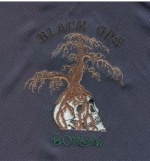
Auballagh- Member
 Re: mugo pine -preliminaries-
Re: mugo pine -preliminaries-
I've always loved mugo pines, and this one is really great thouhg if it was me I wouldn't remove the dead wood just reduce it's size a little. Very nice tree

giga- Member
 Re: mugo pine -preliminaries-
Re: mugo pine -preliminaries-
Thanks for your comments.
Some thought about it: First I have to say that I know P. mugo in its natural habitat very well and relating to this the tree appears not unnatural to me. Deadwood rates of about 80 to 90% are not uncommon. And although this tree once grew flat on the grown one can find trees in the actual planting position for example in rock cracks. Based on this P. mugo growing under extreme conditions differ not so much from Juniper species.
From the artificial point of view it is absolut not an option for me to cut the upraising part of. I find it quite evocative as it reminds me of a scorpion. Maybe the deadwood part should be edited a little bit, but not now.
Regards,
Marco
Some thought about it: First I have to say that I know P. mugo in its natural habitat very well and relating to this the tree appears not unnatural to me. Deadwood rates of about 80 to 90% are not uncommon. And although this tree once grew flat on the grown one can find trees in the actual planting position for example in rock cracks. Based on this P. mugo growing under extreme conditions differ not so much from Juniper species.
From the artificial point of view it is absolut not an option for me to cut the upraising part of. I find it quite evocative as it reminds me of a scorpion. Maybe the deadwood part should be edited a little bit, but not now.
Regards,
Marco
MerschelMarco- Member
 Re: mugo pine -preliminaries-
Re: mugo pine -preliminaries-
MerschelMarco wrote:Thanks for your comments.
Some thought about it: First I have to say that I know P. mugo in its natural habitat very well and relating to this the tree appears not unnatural to me. Deadwood rates of about 80 to 90% are not uncommon. And although this tree once grew flat on the grown one can find trees in the actual planting position for example in rock cracks. Based on this P. mugo growing under extreme conditions differ not so much from Juniper species.
From the artificial point of view it is absolut not an option for me to cut the upraising part of. I find it quite evocative as it reminds me of a scorpion. Maybe the deadwood part should be edited a little bit, but not now.
Regards,
Marco
hello Marco,
Yes you're partially right, but the 80 to 90% deadwood, maybe on the extremes but for that I like to explaine myself. With my personal opinion I was referring to the image your first pictures (of the tree in original flat position) because it reminded me of that indeed 'typical' habitat of pinus mugo, forests of flat broad mugo abundant growth. They are mountain pines but mostly restricted upto a certain altitude and upto a certain inclination, so mostly you find those mugo habitats on the in-between areas, extreme examples not included. The 'image' i was referring to was exactly this, the usual habitat so I try to visualise here for other memebers, with a few pics of examples of austrian alps, eg. mountain Rax and Lechtal, well known to you perhaps. Last one is southern poland. This is why I said its not a typical example


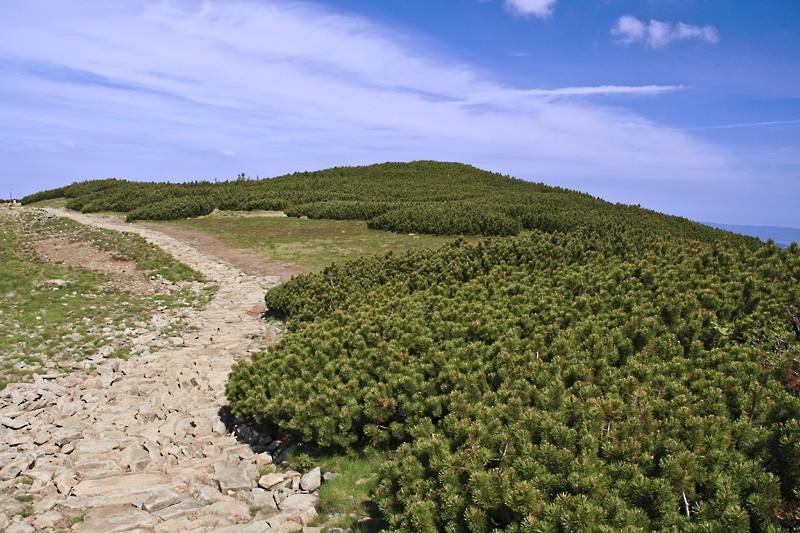
Guest- Guest
 Re: mugo pine -preliminaries-
Re: mugo pine -preliminaries-
Thank You so much for the photos of their natural habitat, something I have wanted to see from someone who has a love for the tree. About how tall are these trees on average in these photos? What are the weather parameters in the areas you have posted, if you know? Sorry for the questions.
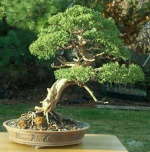
Vance Wood- Member
 Re: mugo pine -preliminaries-
Re: mugo pine -preliminaries-
Vance Wood wrote:Thank You so much for the photos of their natural habitat, something I have wanted to see from someone who has a love for the tree. About how tall are these trees on average in these photos? What are the weather parameters in the areas you have posted, if you know? Sorry for the questions.
Mugo Pine builds a more or less compact and characteristic belt (as seen on the Photos) at a sea level about 1700 till 2000 m (east Alps). This is called, what a surprise
The normal shape of the tree is not a good image for a bonsai it´s quite boring and ugly in my opinion. To find a model styling these trees one can orient by other pine species with a strong masculine character like black Pines for those with a big trunk, or (why not ?) as mentioned a juniper for elegant trunks like this.
Regards,
Marco
MerschelMarco- Member
 Re: mugo pine -preliminaries-
Re: mugo pine -preliminaries-
Thank you for your response. Personally I don't think that there is a more suitable Pine for bonsai purposes anywhere in the world. It is a treat for me to see where they grow and how they grow in their natural habitat.

Vance Wood- Member
Page 1 of 1
Permissions in this forum:
You cannot reply to topics in this forum







